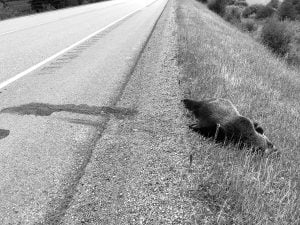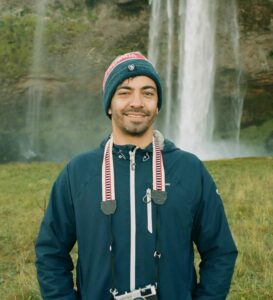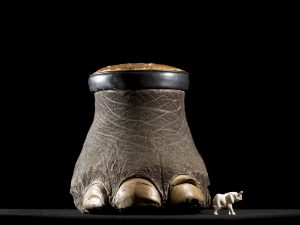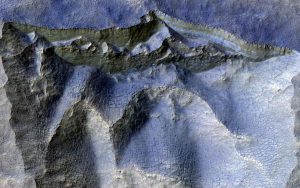A satellite image of a walrus haulout and an example of the type of images “walrus detectives” will be scouring over the next five years. (Photo: Satellite imagery 2021 Maxar Technologies)
While widespread hunting caused Arctic walrus populations to plummet in the 19th and early 20th centuries, walrus are not listed as endangered in Canada. Currently assessed as a species of special concern, Laforest says one of the project’s key messages is that while walrus face numerous threats, there is still a chance to get it right in terms of “proper habitat protection, proper monitoring and proper mitigation.”
One major potential threat to walrus is the rapid rate of seasonal sea ice reduction in the Arctic, currently declining around 13 per cent a year. Walrus are dependent on seasonal sea ice for haulouts and as a platform from which to feed on their preferred fare of sea cucumbers and sea stars.
Laforest says the mistakes we’ve made in the past regarding walrus should serve as motivation. Walrus are generally thought of as an Arctic animal in Canada; however there was once a time when they thrived throughout the east coast of Canada, with populations found in Nova Scotia, the Gulf of Saint Lawrence and Newfoundland.
“We made so many mistakes that they’re gone from these parts of the country,” says Laforest. “There’s a real responsibility for Canada and other nations to work [on issues] that are impacting walrus.”
The project will depend heavily on citizen science, which has numerous benefits, according to Laforest. Due to the sheer volume of images collected, opening the project up to the public means significantly more data will be collected. The project also gives the public a chance to do something positive for the environment — something Laforest believes is top of many peoples’ minds following this month’s COP26 climate conference in Glasgow.
“It’s a great way of having people learn more about an animal they may never get to see with their own eyes.”
Interested in becoming a walrus detective? Register for the program on the WWF website.






